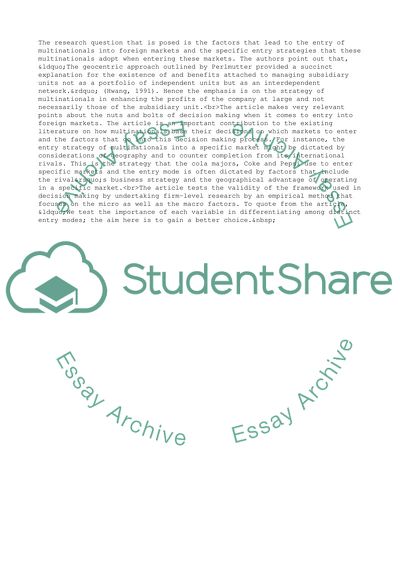Cite this document
(Global Strategy and Multinationals Entry Mode of Choice Article, n.d.)
Global Strategy and Multinationals Entry Mode of Choice Article. Retrieved from https://studentshare.org/management/1733034-articles-review
Global Strategy and Multinationals Entry Mode of Choice Article. Retrieved from https://studentshare.org/management/1733034-articles-review
(Global Strategy and Multinationals Entry Mode of Choice Article)
Global Strategy and Multinationals Entry Mode of Choice Article. https://studentshare.org/management/1733034-articles-review.
Global Strategy and Multinationals Entry Mode of Choice Article. https://studentshare.org/management/1733034-articles-review.
“Global Strategy and Multinationals Entry Mode of Choice Article”, n.d. https://studentshare.org/management/1733034-articles-review.


